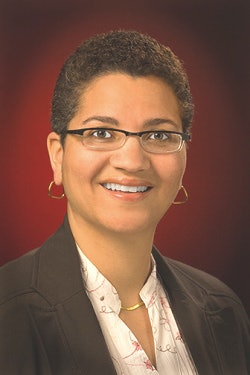 Lisa Tittle
Lisa TittleThe science, technology, engineering and math (STEM) degree and career emphasis of the past several years has cast a shadow over the importance of effective reading and writing skills as they pertain to academics and the workplace. College educators and administrators in charge of program development should remain conscientious of students’ need for adept reading and writing skills to comprehend not only STEM concepts but also for increased comprehension in all academic subjects.
To be clear, the importance of STEM education and training is duly noted. According to the National Science Foundation, the number of graduates in STEM-related disciplines has grown between 42 percent and 167 percent in the last 10 years in areas including health-related fields, biological and agricultural sciences, and computer sciences.
But STEM is not a math- and computation-only degree; extensive reading, summarizing, synthesizing and analyzing of text along with effective written expression as it relates to a particular topic are also an integral part of earning a degree, STEM or otherwise.
Data suggest that the gap in reading and writing skills is widespread. According to the National Report Card, 52 percent of high school graduates scored at the basic level in writing while 38 percent scored at the basic level in reading. To further prove this point, developmental reading and writing course enrollments are overflowing on college campuses across the United States, yet many students are allowed to enroll in college-level courses such as psychology, health or history while taking developmental reading and writing courses. These college-level courses require extensive reading (the ability to recognize the words on the page), note-taking (retrieving key pieces of information from the text) and writing (generating essays and research papers based on concepts relevant to the subject matter).
The National Center for Educational Statistics reports that 68 percent of students beginning their education at community colleges are enrolled in at least one developmental course, thereby entering college underprepared to complete the reading and writing assignments associated with college-level classes. Despite this, the emphasis in higher education often remains on “fixing” developmental math, accelerated math courses, summer bridge programs with a math and science focus, or articulation agreements with public schools to teach developmental math courses during the junior and senior years of high school.
These efforts are commendable and should not be abandoned; conversely, little interest and initiative have been expended in making sure these same students can read the textbook or write a coherent paragraph with few grammatical and mechanical errors.
What level of success can students have in STEM education and training (or other disciplines) if they are not able to read and write at a college level? In order to excel, students need to articulate concepts they have learned about in textbooks, course materials and published articles. The application of reading and writing skills is essential to this process.
Faculty should not accept poorly written papers or teach courses in such a way that students do not have to comprehend academic articles and textbooks. All education competencies, such as critical thinking and oral and written communication, are important elements in higher education. Assessing what students are learning to excel beyond college and in the workplace is an expectation of higher education institutions that impacts students on many levels. Higher education institutions must be committed to place resources for student learning in all areas of competency, not just scientific and quantitative reasoning and technology competency.
STEM students must be able to complete extensive reading in textbooks and scholarly articles for research. In addition, students must analyze text by identifying the main ideas and supporting details, making inferences and thinking critically about the information in the text. Also, students have to apply what they have learned from the reading selection to their studies, project or research; this application may be expressed in written communication such as a research paper or work-related correspondence like an email or a presentation to colleagues.
Furthermore, STEM students may have to generate dozens of pages of research by integrating outside sources, synthesizing information and documenting references. It is like a revolving door: completing the research requires the use of many reading skills. From reading a variety of texts on the topic, a written product is produced that then is read and used by someone else to complete another research project. Numerous reading and writing skills are part of this essential exercise. Mastery of these skills requires practice, experience and accountability on the part of the student and the college.
STEM education is important; the energy being expended to raise awareness and prepare students for a future in this ever-evolving field is also important. But educators, grant writers and college administrators in both academic and student affairs need to maintain equal focus on effective reading and writing skills that are an essential part of academic success in STEM areas. When reading and writing skills are given the attention they are due, all students, not just those in STEM-related fields, will be better prepared for college success, college completion, community involvement and workplace responsibilities.
Dr. Lisa M. Tittle is a professor at Harford Community College.















